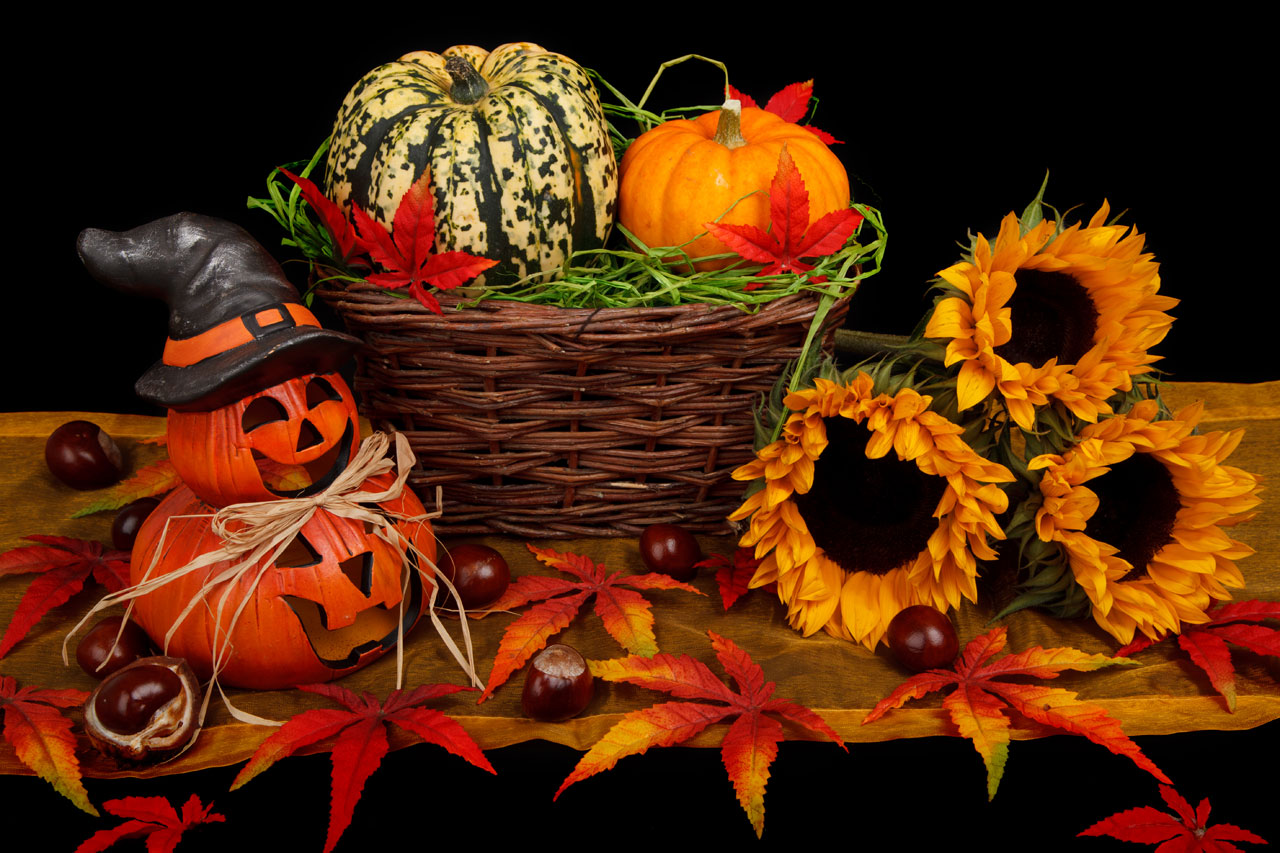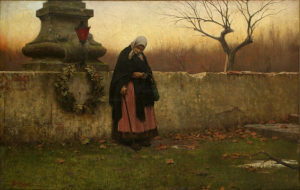
Vera Kratochvil
Publicdomainpictures.net
(Note:This has been edited and rewritten in some parts for the 2023 edition. ]
October 31st is set aside as Halloween. It is not an official holiday (meaning government shuts down, banks closed, and many professional offices closed) but is celebrated nearly as one these days. There are really two separate Halloweens, one is secular and the other religious. The secular one most people easily understand. Kids dress up in silly or scary masks and go to homes asking for candy by yelling “trick or treat” to those who open their doors. Pumpkins have become associated with the day along with all kinds of scary decorations as well. Horror movies get shown during this time. Halloween has a religious meaning to that goes back to how the Catholic Church set the day up.
The original meaning of Halloween was All Hallows Eve that got contracted over time to Halloween. All Hallows Eve is the vigil of All Saints Day, a solemnity (meaning a major feast in the Catholic Church’s liturgical calendar). All Saints Day honors all the saints we know by name and any saint in heaven whose name is unknown to us. Originally this feast was celebrated on 13 May, but Pope Gregory III (731-741 AD) moved it to 1 November as that was the day the foundation of a new chapel (St. Peter’s Basilica) was being laid. He wanted to dedicate the new chapel to All Saints. Halloween then became part of a three-day period called ‘Days of the Dead” which it is the first day of (the vigil), then followed by All Saints and then by All Souls (those in purgatory).

National Gallery Prague
Public Domain/Wikimedia Commons
During the reign of Pope Gregory IV (827-844 AD), he decided to make the feast of All Saints (just celebrated in Rome at that point) universal meaning all dioceses had to observe it. This meant that people with their own cultures would celebrate in their own ways. Since it was customary to have vigils before a major feast day, there was nothing unusual in this. In celebrating these particular holy days, we are reminded of heaven and hell. It reminds us that we have choices to make in this life that can lead to one of two outcomes: heaven or hell. By striving to live good lives by following God’s teachings, we want to go to heaven rather than the other place.
The roots of Halloween thus are not founded in any pagan celebration (such as Samhain or Druid festivals), and it is just coincidence that it occurs during the same time frame. If you study what those festivals were about, they had nothing to do with Christianity and followed a different belief system. Samhain, perhaps the best known, was a harvest festival in Scotland to celebrate the end of the harvest and to prepare for the coming of winter. It was a common belief (and not limited to Scotland, Ireland, or England) that this particular time of year where the transition from light to dark occurred meant also when evil spirits would abound to cause trouble. So they would offer them food at their tables for these invisible guests. Mischief Night grew out of this as well where you would do pranks on your neighbors.
Communal eating during this time meant lots of shared foods given out. The Scottish Halloween Cake was popular was hidden inside was a special prize of three trinkets. Later others celebrating All Souls Day would hand out pastries to those who came to console them on family who had passed away and that to would also add to the idea of handing out food during this time. Many wore masks to cover their faces so evil spirits would not see them. As the celebration of Samhain and others like it faded with the conversion to Christianity, some of the old rituals of having harvest festivals, wearing masks, and asking for food would continue. Creating lanterns too out of turnips and other things would continue. The Irish tradition of the Jack O’ Lantern was imported to the US and, thanks to the wonderful availability of pumpkins (and easier to carve than turnips) became a symbol for Halloween that many adopted as well.
Protestants had a different take on Halloween and All Saint’s and All Soul’s Day. The argument (and there are several different ones, but this is the most basic) is that the Catholic church merely taken over these pagan festivals and incorporated them into the church by renaming them. More zealous Protestant denominations like the Puritans banned Halloween (along with Christmas and Easter) saying they were pagan. In places where such views were strongly held (such as in the northeast of the U.S. or in England when the Puritans were in charge), it had the full power of the state to impose the restrictions. As time went out, and without many Catholics around to push back (in countries like England they were forbidden to practice and adherents who failed to submit to the new Protestant order imprisoned or executed), this became a dominant view of what Halloween was.
The religious origins of Halloween were overtaken and completely secularized as a result.
What the Protestants who hated Halloween didn’t count on was the many peoples who still practiced forms of Halloween immigrating to the U.S. While they had strict controls in New England, many simply landed in other areas where it was allowed and even embraced. The old English and Scottish custom of knocking on doors for Soul Cakes and promising to pray for the departed resumed along with wearing costumes. Likewise, the old customs of holding harvest festivals where people would gather, eat food, and share stories of old would resurrect. Kids would bob for apples, there would be spooky tales told, but most of all it was just a fun time. Halloween, far from being made extinct by like the Puritans, came back. And when the Puritans and those that shared their views fell out of favor and power in England, it came back (though sadly some traditions would remain more secular as a result).
Halloween then became a time of festivity, trick or treating, and putting on funny or sometimes scary outfits. The idea of Halloween parades would come about as a result of trying to curtail some of them more unpleasant sides of Halloween, namely Mischief Night pranks that sometimes got out of hand. Using toilet paper to cover trees, eggs to pelt cars and people, and sometimes more dangerous ones (like a flaming bag of dog poop on a porch) led to the creation of more ways to channel that energy.
Halloween candy, once a small, became national as did pumpkins. No longer were pumpkins just for pumpkin pie but many wanted them for decoration as well. And competition would emerge as to who could grow the biggest one of all. And of course, the selling of costumes and holiday decorations would explode as well. From costumes to candy, pumpkins to Halloween cakes, Halloween became an unofficial but nationally practice holiday that included kids as well as adults. And let us not forget the various Haunted Houses, haunted hayrides, and people decorating their houses in a wide variety of decorations that no doubt future people will ask “what the heck?”
There is a darker side to Halloween practiced by those who want to glorify violence, horror, and sexuality. Some use the time to dabble in such things as fortune telling, seances, using Ouija boards, or even ghost hunting. All of those things most pagans wanted to avoid during their ancient festivals during this time. At best they wanted to placate spirits and avoid the evil ones as much as they could. Yet now many decide to do these things thinking they are harmless, but many find out it is not at all like they thought it would be. This is why people now are trying to reclaim Halloween to make it less dark and more family-friendly rather than just people dressed up as zombies or worse dressed up in some sexually explicit costumes.
Today you see more families doing more things together such as going to haunted hayrides or holding Halloween parties where kids can get treats and have fun as well. During Covid lockdowns, such celebrations were limited but coming back as is trick or treating. Many though are opting to also take the time to revisit what the original Halloween was all about. This is perhaps a natural outgrowth of the overhyping and commercialism of Halloween. The higher costs of many items such as candy as made people revisit some classics from the past such as popcorn, roasted pumpkin seeds, baking cookies, and even making your own candy. It is not as hard as you might think.
While the original meaning of Halloween has been secularized for a long time (like Christmas was before it got its resurgence in the 19th century), it is starting to move away from some of the more excessive parts. And for some, the day does include just a few prayers for the two days of the dead that are to come.
Suggested Reading
Rossetti, Msgr Stephen. Diary of an American Exorcist: Demons, Possession, and the Modern-Day Battle Against Ancient Evil. Sophia, 2021.
Van Den Aardweg, Gerard J. M. Hungry Souls: Supernatural Visits, Messages, and Warnings From Purgatory. Tan Books, 2009.
Baker, Robert Allen and Joe Nickell. Missing Pieces: How to Investigate Ghosts, UFO’s Psychics, & Other Mysteries. Prometheus Books, 1992
Thigpen, Paul. Saints and Hell, and Other Catholic Witnesses to the Fate of the Damned. Tan Books, 2019
,


